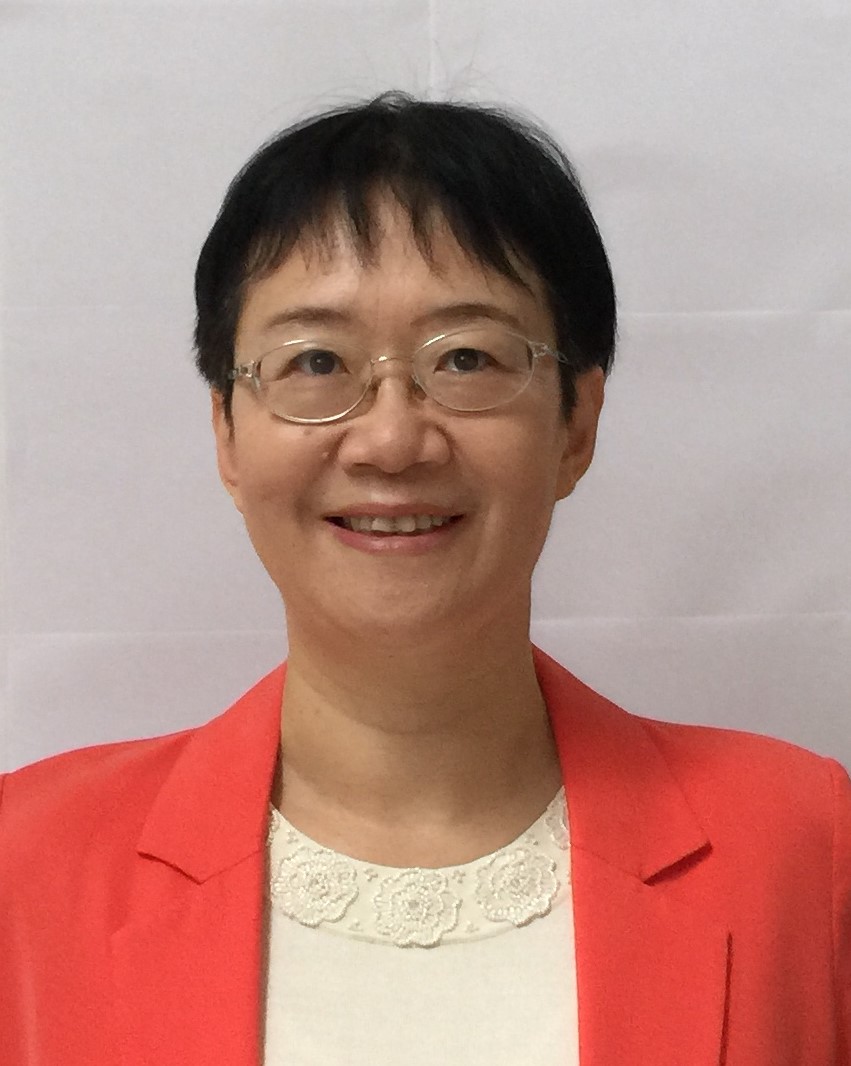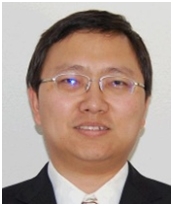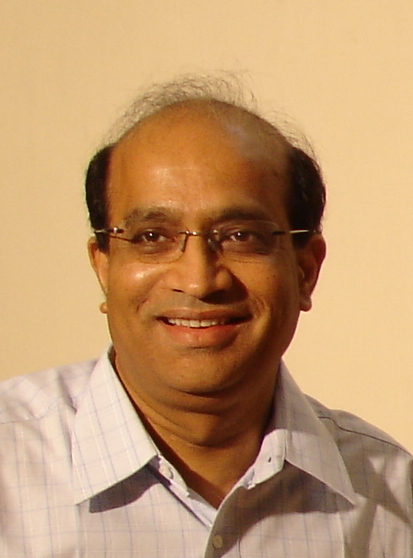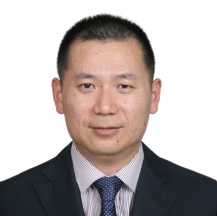Confirmed Keynotes and Invited Talks
Keynotes:
Professor Ling Liu

Professor, Distributed Data Intensive Systems Lab, School of Computer Science, Georgia Institute of Technology, US
Biography:
Ling Liu is a Professor in the School of Computer Science at Georgia Institute of Technology. She directs the research programs in Distributed Data Intensive Systems Lab (DiSL), examining various aspects of large scale data intensive systems, including performance, availability, security and privacy. Prof. Liu is an elected IEEE Fellow, a recipient of IEEE Computer Society Technical Achievement Award in 2012. She has published over 300 international journal and conference articles and is a recipient of the best paper award from a number of top venues, including ICDCS 2003, WWW 2004, 2005 Pat Goldberg Memorial Best Paper Award, IEEE Cloud 2012, IEEE ICWS 2013, Mobiquitous 2014, ACM/IEEE CCGrid 2015. In addition to service as general chair and PC chairs of numerous IEEE and ACM conferences in data engineering, very large databases, distributed computing, cloud computing, big data fields, Prof. Liu has served on editorial board of over a dozen international journals. Currently Prof. Liu is the editor in chief of IEEE Transactions on Service Computing. Prof. Liu’s current research is primarily sponsored by NSF, IBM and Intel.
Title: Leveraging Big Data Analytics for HealthCare Applications
Abstract:
Healthcare industry is one of the largest producers of Big Data, driven by record keeping, compliance and regulatory requirements, patient care, healthcare administration and research, as well as the growing volume of data generated from personal healthcare sensors and monitors and from a variety of social media channels. On one hand, Big Data Analytics and Big Data Technology hold the potential to transform healthcare delivery towards high quality and low cost, especially in clinical decision support, disease surveillance, and population health management. For example, according to a report by IHT2, the U.S. healthcare alliance network Premier has utilized its Big Data on resource utilization reports and transaction level cost data, collected from its 2,700 members, hospitals and health systems, 90,000 non-acute facilities and 400,000 physicians, to generate comprehensive and comparable clinical outcome measures. These outputs have improved healthcare decision-making processes at approximately 330 hospitals, saving an estimated 29,000 lives and reducing healthcare spending by nearly $7 billion. On the other hand, Big data analytics and its applications also open doors for both intrusion of patient privacy and risks of misuse and abuse of Big Data in the absence of quality and usage governance. In this talk, I will examine the promise and potential of Big Data Analytics in improving quality and reducing cost of healthcare services through some real world examples. More importantly, I will explore some research opportunities and challenges in transformative development of Big Data technology towards the next generation of healthcare services.
Professor Lei Liu

Professor, Institution of Biomedical Research, Fudan University; Deputy director of Biological Information Technology Research Center, Shanghai, China
Biography:
Prof. Lei Liu is a Principle Investigator at the Institute of Biomedical Sciences at Fudan University. He is also the Director of Translational Medicine at the Shanghai Clinical Center of Public Health affiliated with Fudan University. He is the leading scientist for the Project "Knowledgebase of Precision Medicine for Disease Studies" under the National Key Research Program of Precision Medicine. He obtained his Ph.D. of Cell Biology from University of Connecticut in 1997 and continued his postdoctoral training in computer science at the same school. He worked as the Director of Bioinformatics at the University of Illinois at Urbana-Champaign before returned to China in 2007. His expertise lies on biomedical informatics with more than 70 scientific publications.
Title: From Precision Medicine to Smart Medicine
Abstract:
With the development of science and technology has entered intelligent era, Biomedicine will become more intelligent and precise. The trend of precision medicine study is the integration of various new technologies including big data technology, omics technology, bioinformatics, and so on. The research in life sciences has gradually turned into the mode of data-driven discovery. The key step in the process is the understanding and annotating the biomedical big data. We believe that the integrated analysis of clinical and bioinformatics data can make breakthrough in precision medicine. Precision medicine will revolutionize the medical practice, allow doctors make personalized and precise diagnosis, treatment and prevention plan based on patients' personal genomic data, life style and other specific factors.
Invited talks:
Professor Fengfeng Zhou

Professor, College of Computer Science and Technology, Jilin University, China
Biography:
Dr. Zhou is a professor of health informatics in the College of Computer Science and Technology at the Jilin University. He is also an awardee of the Hundred Talent program of the Chinese Academy of Sciences, and the Level-B Scholar of the Shenzhen Phoenix Plan. He worked as a research scientist of bioinformatics in the University of Georgia, USA. He received his Ph.D. degree in computer science in the University of Science and Technology of China in 2005. His laboratory is working on a number of topics in health informatics and bioinformatics, including machine learning, heterogeneous data fusion, and high performance computing algorithm, etc. He served as frequent reviewers for more than 20 international journals and 10 international conferences. He also served as associate editors for two scientific journals, and editorial board members of anther two. He has published more than 30 scientific journal papers, including 29 indexed by the SCI database.
Title: A comprehensive curation of CRISPR annotations
Abstract:
CRISPR is an array of clustered regularly interspaced short palindromic repeats, and plays an active role in regulating foreign invasive elements in the prokaryotic genomes. Recently CRISPR has been engineered as a genomic editing tool to conduct a target-specific gene editing in the mammalian genomes. CRISPR-associated gene (Cas) encodes an enzyme to facilitate the editing machinery, and the most well-studied system is the CRISPR-Cas9 pair. We carried out a comprehensive curation of the existing annotation of CRISPRs in the prokaryotic genomes, and observed quite a number of inconsistency in the annotations. The observed results demonstrated that it’s essential to sensitively detect the direct repeats (DRs) for a CRISPR detection program. The comparison with the existing tools also supports this suggestion.
Professor Uwe Aickelin

Professor, Faculty of Science, University of Nottingham, UK
Biography:
Professor Uwe Aickelin joined the University of Nottingham in 2003. Before taking up the current position as VP at UNNC he has been the Head of the School of Computer Science at Nottingham. Uwe has worked closely with China for many years, including being appointed as Concurrent Professor at FudanUniversity in 2015 and the award of a Special Professorship at Shenzhen University in 2014. Professor Aickelin has worked for more than twenty years in the fields of Artificial Intelligence, Optimisation and Datamining. During this time he has authored over 200 papers in leading international journals and conferences (Google citations 6600, H-index 43) and his YouTube videos on Data mining have been watched by more than 400,000 people.
Title: Robust Data Mining
Abstract:
In the past, (combinatorial) optimisation and data mining have often been seen as separate conceits. However, there is considerable synergy. The talk will first introduce the concept of robust optimisation. Then I will outline the vision of robust data mining: idea is to borrow suitable concepts from such robust optimisation research to achieve data mining solutions that can more easily withstand changes. The talk will illustrate the idea with potential health applications.
Professor Ramamohanarao (Rao) Kotagiri

Professor, Fellow of the Institute of Engineers Australia, Fellow of Australian Academy Technological Sciences and Engineering and Fellow of Australian Academy of Science. The University of Melbourne, Australia
Biography:
Professor Ramamohanarao (Rao) Kotagiri received PhD from Monash University. He was awarded the Alexander von Humboldt Fellowship in 1983. He has been at the University Melbourne since 1980 and was appointed as a professor in computer science in 1989. Rao held several senior positions including Head of Computer Science and Software Engineering, Head of the School of Electrical Engineering and Computer Science at the University of Melbourne and Research Director for the Cooperative Research Centre for Intelligent Decision Systems. He served on the Editorial Boards of the Computer Journal Universal Computer Science, IEETKDE and VLDB (Very Large Data Bases) Journal. He was the program Co-Chair for VLDB, PAKDD, DASFAA and DOOD conferences. He is/was a steering committee member of IEEE ICDM, PAKDD and DASFAA. He received Distinguished Contribution Award by PAKDD for Data Mining; Distinguished Contribution Award in 2009 by the Computing Research and Education Association of Australasia; Distinguished Contribution Award by DASFAA for Database Research; Distinguished Service Award by IEEE ICDM for Data Mining.
Rao is a Fellow of the Institute of Engineers Australia, a Fellow of Australian Academy Technological Sciences and Engineering and a Fellow of Australian Academy of Science.
Title: Robust identification of Retinal Layers through OCT imaging in the Presence of Pathology
Abstract:
Optical Coherence Tomography (OCT) imaging technology is becoming more popular for screening retina and choroid due to its ability to investigate tissue structures. OCT shows very clear changes in the retinal tissue layers when retinal diseases are present. Fast technology of OCT imaging such as Spectral Domain Optical Coherence Tomography (SD-OCT) and Enhanced Depth imaging optical coherence tomography (EDI-OCT), make it possible to capture retinal tissues layers and choroid in 3D. The retina has 10 tissue layers, and the choroid tissue is located underneath the retina and supplies oxygen to retina, any damage to this tissue is a precursor to retinal diseases. Our aim is to detect the retinal tissues layers and choroid automatically in the presence of pathologies such as drusen and geographic atrophy. At this stage we can detect all the tissues layers and choroid. In this talk I present our algorithm for detecting various layers using shortest path by representing the image as a graph where the relevant pixels of the image form the nodes of the graph and edge weights between nodes are formed using the spatial distance between nodes, slope similarity to a reference line and non-associativity of the layer, etc. We found this has helped to overcome the distorting effects that pathology can play in the boundary determination. Our method is highly accurate, robust, reliable and consistent. Our method can enable to quantify the biomarkers for the retinal diseases in large scale study for assessing, monitoring disease progression as well as early detection of retinal diseases.
Associate Professor Hongbo Ni

Associate Professor, School of Computer Science, Northwestern Polytechnical University, China.
Biography:
Hongbo Ni is an associate professor from the School of Computer Science, Northwestern Polytechnical University, China. He received his bachelor’s degree and Ph.D. from Northwestern Polytechnical University, China. He worked in Human-Computer Interaction Institute (HCII) of Carnegie Mellon university as a visiting scholar from 2015-2016, and also in the Department of Information Systems, Sherbrooke University in Canada from 2009-2010 as a research fellow. He has published more than 40 academic papers, served as publicity/session chair and program member for a number of conferences. His research interests include pervasive computing, embedded computing and system. He is a member of CCF TCPC (Technology Commission of Pervasive Computing).
Title: Pervasive Health Sensing and Computing: Trends and Opportunities
Abstract:
In this talk, I will review the recent developments in the field of pervasive health sensing and computing, firstly, with rapid development of material, MEMS and networks, diverse novel sensing methods appear; secondly, given the dynamic nature of health data, a variety of innovative approaches emerge, such as deep learning and big data analysis; finally, for the purpose of improving quality of life, two kinds of health applications are undergoing constant development, on one hand, the researches for the people with special needs proposed by various universities, on the other hand, the researches for the public health funded by some governments. Furthermore, I will introduce the recent research work on multimodal sensing, health data analysis and early warning for the elderly, which is supported by key project of national natural science foundation of China.
HISS journal
WWW journal
- WISE 2016
A combined (discounted) registration is available.

